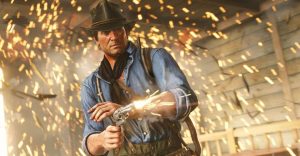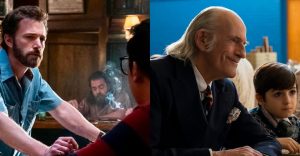Far Cry 6’s Campaign Is Almost As Bad As New Dawn’s

Though Far Cry 6 trailers boasted about the game’s many new systems and narrative experience, its story was an ultimate disappointment, but not as bad as Far Cry New Dawn. Ubisoft’s formulaic gameplay and story continue in Far Cry 6, which fails to introduce many (if any) unique elements. The presence of a potential female protagonist helps set the title apart from other static protagonists, but Far Cry 6’s story fails to deviate from existing Far Cry themes and patterns. Though Far Cry 6 and Far Cry New Dawn fail to craft unique stories, the sixth game provided a more coherent storyline than its predecessor.
In Far Cry 6, players control Dani Rojas, a guerilla fighter pulled into the war after the death of two of her close companions. After joining Libertad in the fight against Anton Castillo, Dani travels across Yara’s island chains to recruit Far Cry 6’s other guerilla factions and lead a charge on the capital. They are assisted by Far Cry 6’s Amigos and other supporting characters like Juan. Securing land from Anton Castillo’s forces, stealing government resources, and recruiting new guerillas are just some of the activities players can enjoy across Yara. While the gameplay can be explosive fun, Far Cry 6’s narrative falls short of expectations, despite the game’s charismatic villain.
Far Cry New Dawn embraced a more scattered storyline centered around the reconstruction of society after a nuclear fallout. Unfortunately, New Dawn shares similar narrative failures, with Far Cry 6’s canon story providing more connection between each critical event and story mission. Though Ubisoft establishes Dani’s goals and motivations early on, New Dawn takes far too much time to invest players in their goal and surrounds them with two-dimensional characters. Though both Far Cry stories need significant improvements, Far Cry 6 is arguably the better game.
Far Cry 6 Never Figures Out Its Tone

While revolutionary stories in the gaming industry are nothing new, they often embrace a singular narrative tone that maintains consistency throughout the campaign. Sometimes this trope secures the darker morality of revolutions, trading one tyrant for another or losing the will to fight along the way. Far Cry 6’s story presents a similar choice, forcing Dani Rojas to experience loss, anger, and pain at the hands of Anton Castillo’s cruel military. This fight initially appears righteous but leads players down a confusing route of twisted morals and psychopathic destruction. Compromising ideals is essential to growing Libertad’s power and controlling Yara, but the game often fails to take itself seriously during these moments. Player choice is minimal, leaving players to awkwardly laugh and smile along with zany characters overly enthused about murder.
Far Cry New Dawn suffered similarly, occurring in the aftermath of the nuclear disaster at Far Cry 5’s conclusion. Despite the tragic fate of the previous game’s protagonist, New Dawn attempts to secure a balance between humor and its naturally dark nature. The attempt to rebuild civilization clashes with humanity’s base instincts for chaos, control, and violence. Despite the stakes of society, and the desperation of Thomas Rush to rebuild humanity’s carefree life, New Dawn still pursues cheap redneck-styled humor. Characters designed to lighten the mood only hinder the plot and become an unavoidable irritant during story missions.
Far Cry 6 Continues Tropes Of Twisted Fatherhood

Far Cry 5, New Dawn, and 6’s stories are riddled with fatherhood and mentorship tropes. While this may seem like a minor archetype in the wake of more significant happenings, players can trace most events back towards familial ties of one sort or another. In Far Cry 6, players encounter Anton Castillo and his son Diego relatively quickly. After Anton catches Diego attempting to flee Yara aboard a fishing boat, players are privy to some of his upbringing in brief cutscenes, news reports, and more. Anton Castillo’s twisted form of parenting results in traumatizing Diego, pushing him to adopt the same ruthless ideals that sparked Yara’s rebellion. The constant mental and emotional abuse of Diego urges players onwards to try and free the boy from his prison but fails to deliver a satisfying conclusion. The absence of a happy ending isn’t new to the Far Cry series but adds a disappointingly underwhelming ending to Far Cry 6.
As a sequel to Far Cry 5, New Dawn continues Joseph Seed’s twisted legacy. Known as the Father among his followers, Seed gathered a cult under his demented teachings. Though players had already conquered his cult in Far Cry 5 and eliminated most of the Father’s “family,” a new organization appeared following the nuclear war. Ethan Seed, the presumed son of Joseph Seed, soon acquired control of New Eden. Ethan despised Joseph for leaving him, his mother, and the rest of his followers to die in the apocalypse, crafting the perfect estranged son-absent father story trope. Unfortunately, the players’ presumed dislike for both characters fails to provide any meaningful investment in the story. When important characters and antagonists fail to connect to players, the narrative suffers too. Thankfully, Far Cry 6 avoided New Dawn’s story mistakes by crafting meaningful, unique characters.
Far Cry 6 And Far Cry New Dawn Prove The Unfortunate Truth Of AAA Titles

The unfortunate truth of recent AAA titles speaks to the inability of larger companies to take risks and explore new stories. Given the astronomical investment video games like Far Cry 6 are, it’s understandable that companies like Ubisoft are more willing to stick to a formula that works. Unfortunately, this pattern has crippled recent installments of the Far Cry franchise. The failure to deviate from established narrative norms limits the possibility for new stories, characters, and gameplay systems.
Far Cry New Dawn gave into more stereotypical tropes than Far Cry 6, releasing when post-apocalyptic games were oversaturated and formulaic. Ubisoft took a bold risk by crafting New Dawn as a direct sequel to Far Cry 5, which was also met with mixed opinions thanks to the unavoidable bad endings and repetitive gameplay. Far Cry 6’s more intuitive gameplay helps its story, as does its increased variation in story missions. Though some mission types can feel redundant, new weapons and interesting settings help diversify each objective.
Far Cry 6’s inability to evolve past the series’ expected standards while constantly grappling with an identity crisis prevents players from fully immersing themselves in the revolutionary adventure. Allowing players to choose their protagonist assisted in personalizing gameplay experiences, but Dani Rojas’ characterization became as muddled as the rebellion’s morality as time progressed. While Far Cry 6 suffers from its fair share of shortcomings, its story is still superior to Far Cry New Dawn. Far Cry 6is available now on Xbox, PlayStation, Google Stadia, Amazon Luna, and PC.
About The Author


















